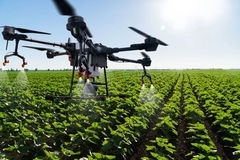
- Industry news
Industry news
- Category news
Category news
- Reports
- Key trends
- Multimedia
- Journal
- Events
- Suppliers
- Home
- Industry news
Industry news
- Category news
Category news
- Reports
- Key trends
- Multimedia
- Events
- Suppliers
Taiwan Agrees on New Maximum Residue Limit for Ractopamine in Beef

Taiwan is the ninth-largest market for U.S beef. Between 2005 and 2010, imports have increased from US$40 million to US$215 million. However in 2011, U.S beef imports dropped off sharply by 50% due to a ban on using Ractopamine.

29 Oct 2012 --- On 15 August 2012, the Department of Health (DOH) amended the standard for veterinary drug residue limits in food by setting the maximum residue limit (MRL) for Ractopamine in beef at 10 µg/kg or ppb. Moreover, this amendment also requires mandatory labeling of the meat product's origin. The new regulation has been enforced since mid-September.
Taiwan is the ninth-largest market for U.S beef. Between 2005 and 2010, imports have increased from US$40 million to US$215 million. However in 2011, U.S beef imports dropped off sharply by 50% due to a ban on using Ractopamine. Ractopamine is a beta-agonist which acts as growth promoter in livestock by diverting fat deposits to muscle tissue. The MRL of this compound in beef was disputed a few years ago because of a disagreement between EU and China to establish MRL for Ractopamine at 10 ppb without sufficient risk assessment data.
To resolve the controversy over the trade of meat containing Ractopamine, Codex Alimentarius Commission made the decision to set a consensus of MRL for Ractopamine at 10 µg/kg in pig and cattle muscle, 40 µg/kg in liver and, 90 µg/kg in animal kidney on 6 July, 2012. These residue levels have no impact on human health based on scientific risk assessment which was carried out by The Joint Expert Committee on Food Additives (JECFA), a group of independent experts convened by the UN food and Agriculture Organization (FAO) and the World Health Organization (WHO). Recently, the JECFA MRL has been used as the international standard in many countries.
SGS laboratories can provide the service of Ractopamine testing in meat products by using LC-MS/MS technique in order to obtain the lowest limit of detection with a high degree of confidence regarding the analyst identification.











